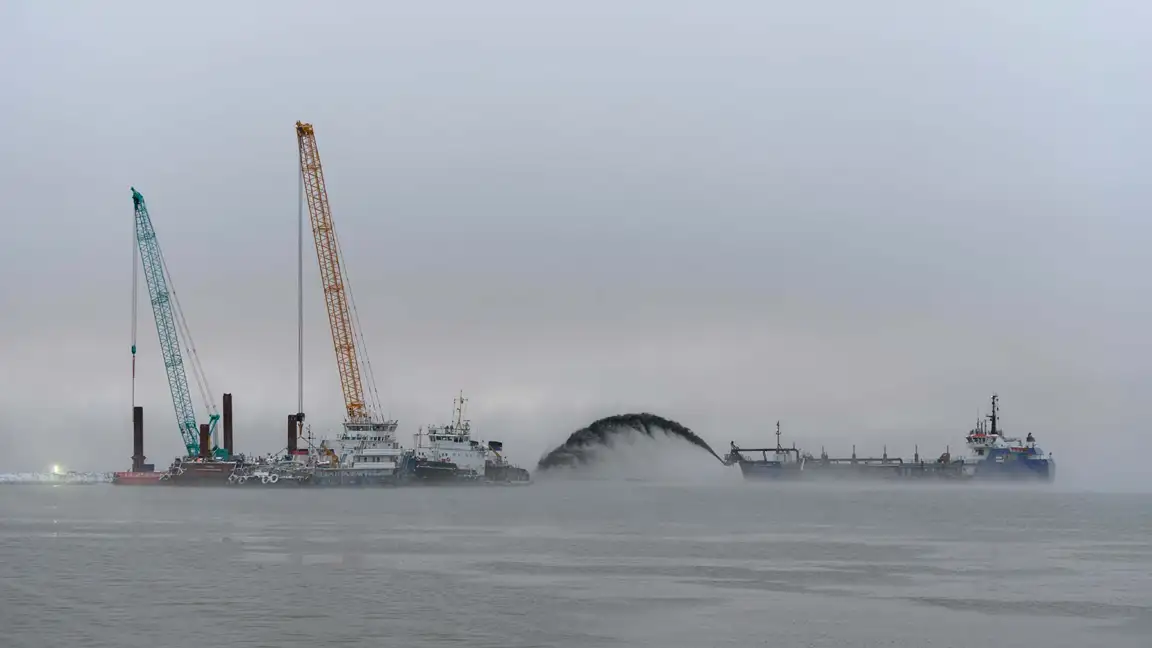The Strategic Importance of the Gomati River Waterway
In a significant move towards enhancing regional connectivity, dredging work has officially begun on the Gomati River, aimed at establishing a vital inland waterway link between Tripura’s Sonamura and Bangladesh’s Daudkandi. The project, expected to be completed within a year, will improve trade and transportation links between the two neighboring countries, transforming the region’s economic landscape.
The Gomati River, flowing through Tripura in northeastern India, has long been underutilized in terms of its transport potential. The river holds immense geographical and economic significance, especially for Tripura, which is geographically isolated from the rest of India. By improving the waterway infrastructure, the region stands to benefit from seamless connectivity to Bangladesh, a critical trading partner. The new waterway will not only improve trade but also promote smoother passage of goods and services between India, Bangladesh, and key ports like Kolkata, strengthening both nations’ economic ties.
Key Details of the Dredging Project
The dredging project is focused on a 54-kilometer stretch of the Gomati River, stretching from Maharani in Gomati district to Sonamura and further connecting with Daudkandi in Bangladesh. With an estimated cost of ₹19.50 crore, the project aims to deepen the riverbed and create navigable passages for vessels. The work is anticipated to be completed within a year.
As part of the project, the construction of eight jetties along the route has been planned, with seven already completed. These jetties will play a crucial role in facilitating cargo and passenger movement, ensuring efficient operations along the waterway.
The Role of Indo-Bangladesh Protocol (IBP)
The Indo-Bangladesh Protocol (IBP) has been a key framework for improving trade and transport between the two nations. Under this agreement, the Sonamura-Daudkandi route was declared an additional port of call in 2020, paving the way for the current dredging project. This waterway link is expected to be fully operational once the dredging work is completed, significantly enhancing the flow of goods and services between the two countries.
Economic Benefits for Tripura and Bangladesh
The successful completion of this dredging project will have a far-reaching economic impact. For Tripura, the new waterway will provide direct access to key trade hubs such as Kolkata Port, facilitating faster and more cost-effective transportation of goods. With improved connectivity, the region can attract more investments, boosting the local economy.
For Bangladesh, this enhanced waterway link will also offer a more efficient transportation route for trade between the two nations, fostering increased bilateral commerce. Additionally, the project is expected to promote tourism, as better connectivity often leads to growth in regional travel and tourism-related activities.
From an environmental standpoint, inland water transport is considered more sustainable compared to road or rail transport, making this project a greener option for the region.
Political and Strategic Implications
Tripura’s BJP MLA, Abhishek Debroy, emphasized the strategic importance of the dredging work. According to Debroy, this initiative is a significant step toward enhancing the region’s global connectivity and boosting trade with neighboring Bangladesh. He also pointed out that some critics had dismissed the idea of an inland waterway connecting Tripura to Kolkata via Bangladesh. However, the project’s commencement has proven that such initiatives can become a reality, marking a major milestone in regional cooperation and infrastructure development.
Future Prospects
The completion of the Gomati River dredging project is just one part of a larger vision to enhance inland water transport in the region. With further projects planned to expand waterway routes between India and Bangladesh, the future holds immense potential for increased connectivity, both for commercial and passenger travel. Tripura, in particular, stands to benefit from these efforts, as improved infrastructure will boost the state’s trade prospects and overall economic development.
As this project progresses, it is expected that Tripura’s transport network will evolve to accommodate growing trade demand, making the region an even more strategic gateway for trade between India and Bangladesh.
Conclusion
The Gomati River dredging project is set to revolutionize regional connectivity by strengthening the waterway link between Tripura and Bangladesh. This initiative, under the Indo-Bangladesh Protocol, promises to enhance economic growth, trade, and cooperation between the two nations. As the dredging work continues, the project will not only improve the region’s connectivity but also open up new opportunities for commerce and tourism, ensuring a brighter future for Tripura and the surrounding areas.
